
Starting in 2015, WalkNE implemented a multi-stage format to help organize and implement walking/biking initiatives and improvements in Nebraska on a statewide level. This same process was applied to 13 different municipalities within the state. The communities ranged from small town of Hebron with a population of 2,500 to one of the largest cities in the state, Grand Island. By introducing a flexible, effective process, S&G Endeavors and its partners in WalkNE found that they were able to facilitate meaningful change on both the large and small scale.
A Big Plan For A Small Community
In a town like Hebron, the process began with identifying stakeholders. As it happened, two city council members were interested and invested in the success of a walk/bike initiative. “By working with the town decisionmakers from the outset, we knew we would be heard and any goals set by the collaborative process would see action,” said Jennifer Hansen, of Public Health Solutions.
In Hebron, a grassroots effort had already been underway to promote walking/biking in the community. The 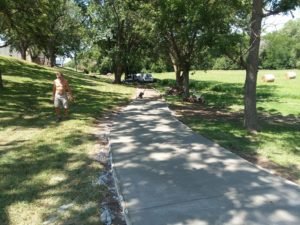
WalkNE efforts integrated with the existing movement with great success. In 2015, S&G Endeavors facilitated a walk/bike summit out of which came a coalition and an action plan. The coalition took a leadership role in implementing the action plan because the presence of two officials on the coalition constituted the necessary authority.
A coalition structure kept the stakeholders involved and invested, so that progress felt inclusive of the many interests impacted by a walk/bike initiative. This was particularly important in the creation and connection of walk/bike paths in the community. The coalition took into account priorities like health, tourism, safety and community connection to decide where to build additional paths. Then, they obtained grants and implemented the construction. In the past two years, the coalition has been able to install bike/walk paths that connect downtown, the city park, the public pool, the community wellness center, the assisted living facility and an RV park serving visitors to the community.
Issues of representation and implementation were simpler in a small community. The careful integration of key stakeholders at each step of coalition building and action created a positive, constructive environment for WalkNE to succeed in Hebron.
Breaking Goals Down to Manageable Action in the City
Would the process work in a larger community? Grand Island is the fourth largest city in Nebraska. With over 51,000 residents, city operations are complex and seated in multiple bodies. The challenge for WalkNE was to bring together the governmental,
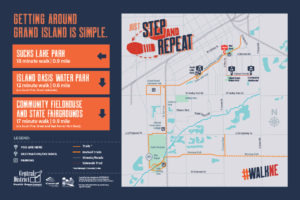
private, and citizen constituencies to effect positive change. Using the model established on a statewide level, Jeremy Grandstaff of S&G Endeavors worked with Health Educators, Amy Roberts and Jennifer Hubl, of Central District Health Department to integrate key stakeholders from the outset so that the process could unfold successfully.
In November 2015, a summit was held with 65 attendees. Among those present were representatives of City Public Works, the Planning Department, the local community college, representatives from the disability advocates community, the School Superintendent, and community members. The outcomes since then have shown that a thoughtful, inclusive process can adapt to the complex needs of a large city.
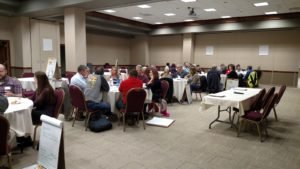
At the summit, the attendees identified three key initiatives and divided into action teams to take them on. “By creating separate action teams, we leveraged the enthusiasm and creativity of the summit into long term success,” said Grandstaff. The action teams each undertook different initiatives, and each had different administrative bodies with which to coordinate their efforts. “Given the complexity of the city and area governance, a single team would have been spread too thin to accomplish the teams goals. The action team approach allowed us to achieve success,” said Amy Roberts.
The Education and Awareness Action Team was created to both promote walking and biking and provide information about the opportunities available in Grand Island. The team held their own events, attended events, and used media resources to promote and educate community members. With the help of grant money, the team also installed seven trail wayfinding signs on the hike and bike trails of Grand Island.
The Complete Streets Action Team set out to get Grand Island to pass a Complete Streets policy. Complete Streets is an approach to transportation planning that directs all street development to be inclusive of all modes of transportation (cars, pedestrians, transit riders, wheelchair users, and cyclists) 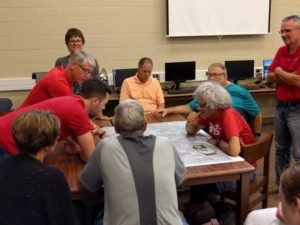
and all ages and abilities. This action team saw success when in July 2018 Grand Island passed a Complete Streets policy.
The MPO Planning Action Team focused its energies on the Grand Island Area Metropolitan Planning Organization (MPO), a body with oversight of transit that includes both Grand Island and the adjacent areas. The goal for this action team was to convince the MPO to include biking and walking in its master plan for regional transportation. Without direct participation of the MPO in WalkNE, the action team needed to determine effective ways to bring its message to the MPO for implementation.
Representatives of the Planning Action Team interfaced directly with MPO members. In addition, understanding that the MPO would be swayed by representation and testimony at its public hearings, the planning team spearheaded active representation of the bike/walk community at MPO meetings. Speakers from the Grand Island City Planning Department, the local community college and citizen advocacy groups all spoke at public hearings with a unified, coherent message. As a result of the efforts of the Planning Action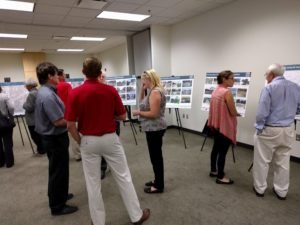
Team, the MPO created the MPO Regional Masterplan and subsequently, worked with the group and community representatives to create a Grand Island Bike and Pedestrian Plan.
A Good, Scalable Process Will Bring About Meaningful Outcomes
“When you compare the way that WalkNE works in Hebron and Grand Island, you can see that the bike/walk goals need very different plans based on the size and complexity of the municipality,” said Grandstaff. The key to positive outcomes lay in building from stakeholders, and assuring that representation of key constituencies was part of each step. As a result, two very different paths, shaped by a similar process, advanced the walking/biking in these communities.
Posted from my blog with SteemPress : http://www.sgendeavors.com/scaling-for-change/